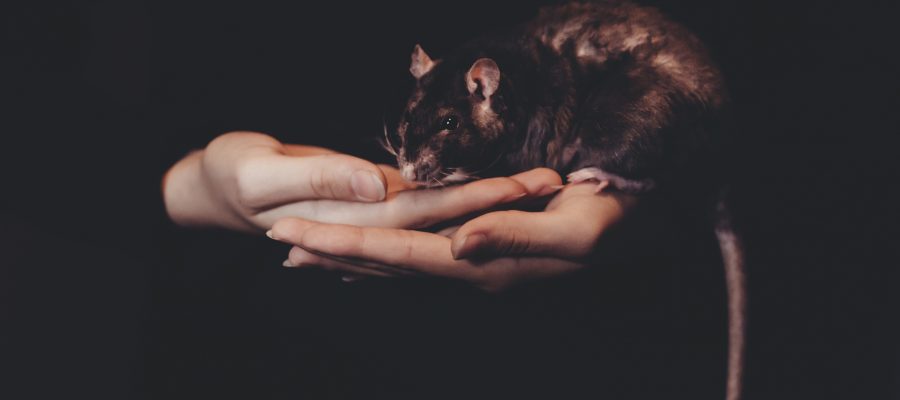Protect Your Home From Rodents
- July 8, 2019
- in Pest Control
- by Ashley Dando
- 86
- 0

Rats and mice are constantly wandering around looking for food and shelter, and if your home gets in their way, they won’t hesitate to enter it. Not only they can contaminate food and damage buildings, but they can also put your health in danger. Worldwide, rodents spread more than 35 diseases. These can be transmitted to humans either by direct contact with a rodent, their feces or saliva, but also through their ticks, mites or fleas. So it is highly important to stay safe, and in this article, you will find out how to protect your home from rodents.
A female rat can have 10-12 babies every 3 or 4 weeks, so that means somewhere between 170 to 204 rats in a year. So even what might appear as one single innocent rat, can soon turn into a massive infestation. That’s why it is highly important to prevent rats from entering your home and to get rid of them as soon as possible in case they do enter.
In Australia, there are 2 main types of rats, and these are:
This species is black or light brown in colour, and a typical adult can measure 12 to 18 cm long (5 to 7.2 in). This is without its tail that can be just as long, if not longer (15 to 22 cm, 5.9 to 8.7 in). Its weight may range between 75 and 230 grams, depending on the subspecies.
They have a high ability to hold many infectious bacteria in their blood, and that’s why they are so dangerous. They had a major role in the spreading of the bacteria that caused plague, during the Plague of Justininan (541 – 542) and the Great Plague (1347 – 1351). During the last one, it is estimated that 75 to 200 million people have lost their lives (30 – 60% of the European population of that time) and it took 200 years for the world population to recover.

The modern black rat spread across Europe during the Roman conquest in the 8th century BC. They are omnivores, feeding with seeds, fruits, leaves, and various insects. So they pose a threat to farmers as well, destroying their crops of cereals, sugar cane, cocoa, coffee beans, and others.
While they are prey to cats, owls and other predators, they do not consist a major thread, as the rats are agile and fast climbers, and they can reproduce very fast. They can carry major diseases such as pneumonia, as well as some incurable diseases.
This is the common rat, the one found in most sewers all over the world. As the name implies, it is usually brown or grey, with a body length of up to 29 cm (11 in.), plus the tail. It can weigh between 140 and 500 grams, which makes it much larger and heavier than the black rat.
It originates from China but is now spread all over the world, on all continents except for Antarctica. Based on these criteria, it is the most successful mammal on the planet (except for humans, of course). And almost wherever humans live, there are rats too.
Selective breeding of the brown rat had produced the fancy rat (which is a pet) and the laboratory rats used for various experiments and research. There are a few major differences between the black and the brown rat, and these are:
– The brown rat has a slanted snout, while that of the black rat is pointed
– The Rattus Norvegicus has small eyes, while those of the black rat is bigger
– The brown rat has small ears, while those of the black rat is bigger
– The body shape of the brown rat is sturdy, while that of the black rat is slender
– The tail of the brown rat is shorter than the rest of its body, while the black rat has a longer tail compared to its body
There are a few sings that can give away these nasty pests, and you need to take action as soon as you notice any of them:
– Droppings – mouse droppings are very small and pointed on both ends, while rat droppings are larger than half an inch. If feces of various sizes are present, it means that there are both adult and young rats in the area. The areas with droppings indicate their active areas, and that’s where bait or traps should be placed
– Urine smell – the urine of rodents has a strong musky odour, and you can easily smell it in places with plenty of rats or mice
– Gnawed holes – while not as big as you’ve seen them in the Tom & Jerry cartoons, they are a good sign of rats or mice. The holes made by mice are about the size of a dime, while those made by rats are about the size of a quarter
– Gnaw marks – rodents leave oily rub marks where they travel and also gnaw on wood. Tooth marks are a sign of rats, while scratch marks are a sign of mice
– Nests – these animals will shred paper and various materials in order to build their nest. Some species of rats prefer to nest indoors, while others make their home deep in the ground
– Strange noises at night – rodents are nocturnal creatures and they usually make a lot of noise when they are scratching, running or gnawing
– Pet behaviour – cats and dogs will act unusual when hearing or smelling rodents in the house. So if you see your dog barking or your cat pawing at spaces beneath furniture, refrigerators, stoves, etc., then there might be something there
You will find various rodent solutions online, some being effective while others not. These include:
– Mothballs – they might be effective against small mice, but they are also toxic and should be handled with care and replaced regularly
– Ammonia – this substance works well because mice will interpret it as the urine of their predators. You can leave open containers with ammonia all over the home (which is dangerous for kids and pets) or you can clean the paths they usually take with it (which will create an unpleasant smell through the entire house)
– Peppermint oil – this method involves soaking cotton balls into peppermint oil and placing them all over the home. The smell might be much pleasant than that of ammonia, but the process is messy, takes a lot of time and should be repeated very often, as the smell fades away quickly
So instead of wasting time, energy and money on these methods, it’s much better to call a pest control company that will apply the right substances in the right spots. The substances they use are tested and safe for the health of your family, and they do not leave strong and unpleasant smells behind.
There are 4 ways to prevent rodents from reappearing into your home:
– Clean – rodents are always looking for food. So make sure to keep all food in containers that are sealed tightly. Keep the trash areas clean and tidy, clean the grills thoroughly and put away pet food overnight
– Seal – mice can squeeze through tiny spaces, as small as a nickel. So make sure to seal up any holes in your walls, around the doors, vents or other crawl spaces around the kitchen or closets
– Monitor – keep an eye on the rodent activity in your home in order to find out their pathways, sources of food and to identify their number and species. Discuss this with your pest control company
– Trap – if rodents are already present, they need to be eliminated, and trapping is a good method. But make sure to also clean and seal, otherwise new rodents will just keep on coming
The best way to get rid of rodents and stay protected is to get the help of a specialist. Safeguard Pest Control is a family-owned and operated company that has been operating since 1989. We have extensive knowledge and experience in this field and can provide you with professional results.
Our services have high standards and we offer pest solutions to residential, commercial and corporate areas, hospitals and schools. We are using the latest technology, in order to offer the best results.
Early detection can save you a lot of money, so it’s better to act now than to be sorry later. Book your Safeguard rodents inspection now by calling 07 5477 6675 or emailing info@safeguardpestcontrol.com.au and allow us to protect your home against rodents.